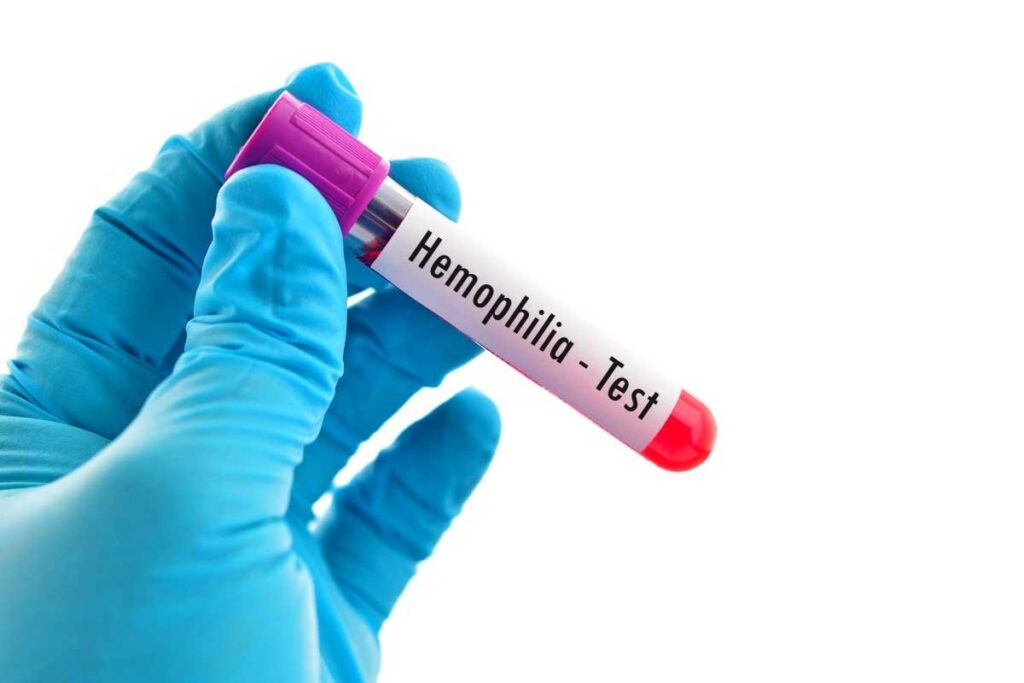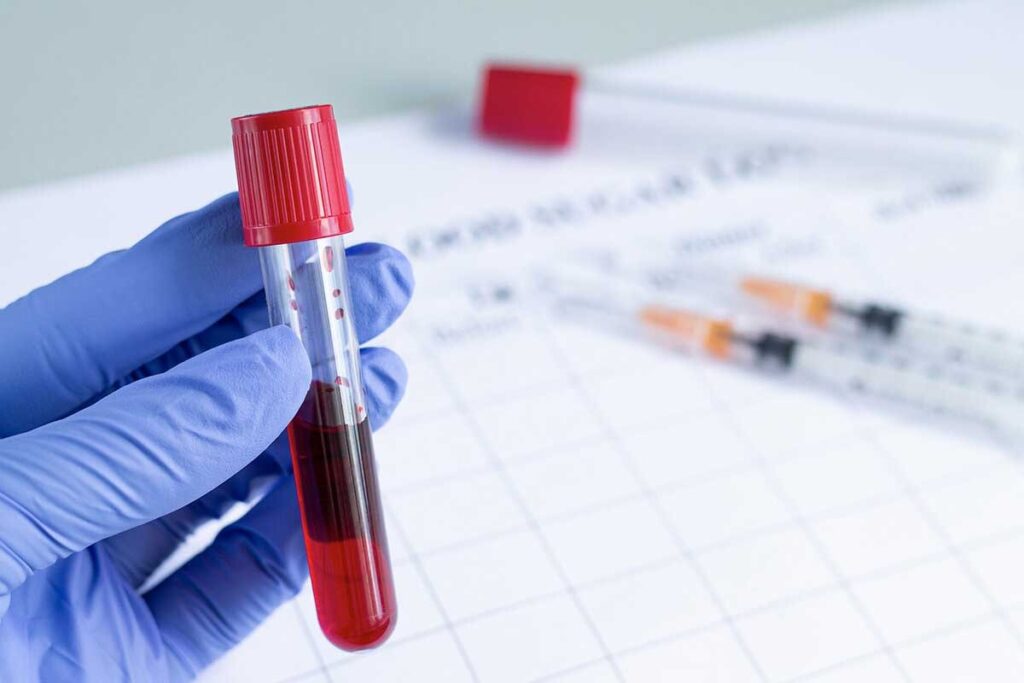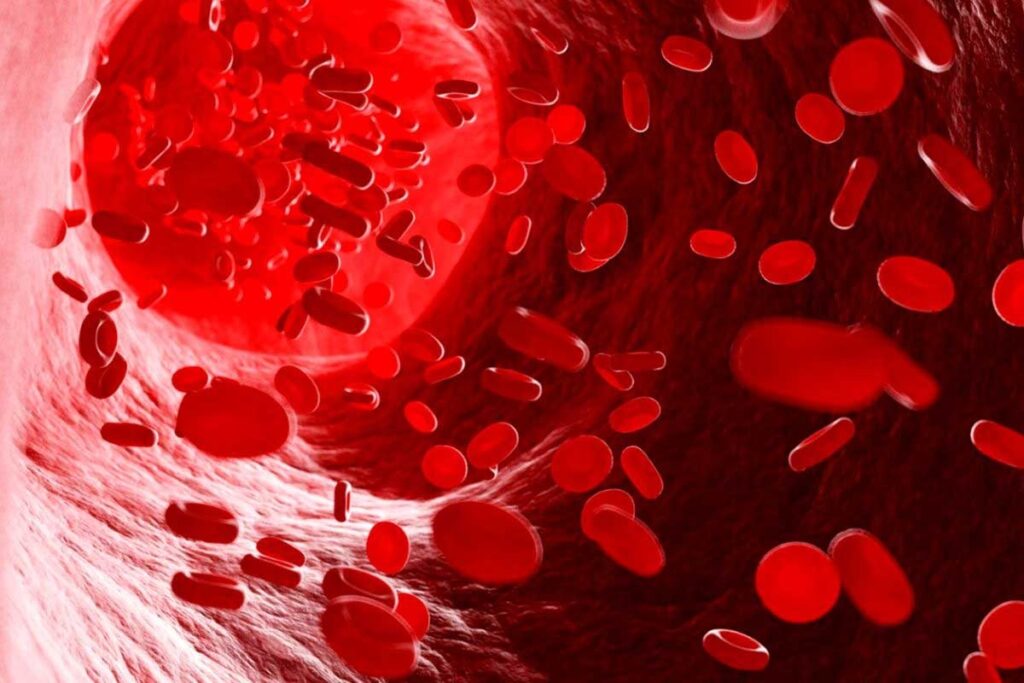
Sickle cell disease (SCD) is a genetic disorder. It happens because of a mutation in the beta-globin gene. This mutation leads to the production of hemoglobin S (HbS) instead of normal adult hemoglobin (HbA).
At Liv Hospital, we are dedicated to caring for patients with SCD. We use advanced diagnostics and innovative treatments. We also offer compassionate support.
Research is ongoing to find new treatments for SCD. This includes fetal hemoglobin inducers to tackle the disease’s complexities.

To understand Sickle Cell Disease, we need to know about hemoglobin S. SCD is a genetic disorder that affects how red blood cells carry oxygen. It happens because of abnormal hemoglobin, called hemoglobin S (HbS), which makes red blood cells sickle and break down.
Let’s break down SCD and its terms. Sickle Cell Disease is also called sickle cell anemia. It’s a condition passed down through genes that affects red blood cells’ hemoglobin.
The term “sickle cell” comes from the sickle shape red blood cells take when stressed or low on oxygen. The disease is caused by a gene mutation in the HBB gene. This mutation leads to HbS, which causes red blood cells to sickle under low oxygen.
Now, let’s talk about SCD’s global impact and how common it is. SCD affects millions worldwide, mainly in Africa, the Mediterranean, the Middle East, India, and Latin America. It’s more common where malaria used to be prevalent because sickle cell trait protects against it.
The disease’s prevalence varies globally. In some African countries, up to 30% have the sickle cell trait. In the U.S., about 1 in 500 African Americans have SCD. It also affects people of Hispanic, Middle Eastern, and South Asian descent.
In conclusion, Sickle Cell Disease is a complex genetic disorder with significant global health implications. Knowing its basics, including hemoglobin S’s role and its global prevalence, is key to tackling the disease.

It’s important for doctors and patients to know the terms used for Sickle Cell Disease. The many names for this condition can cause confusion. This is true, no matter where you are or what language you speak.
In some places, “drepanocytose” is used to talk about Sickle Cell Disease. It comes from Greek words meaning “sickle” and “cell.” This shows how the disease makes red blood cells look like sickles. In English, it’s usually called Sickle Cell Disease (SCD) or Sickle Cell Anemia.
Worldwide, the names might differ, but everyone knows it’s a genetic disorder affecting hemoglobin. The World Health Organization (WHO) sees it as a big health problem, mainly in warm places.
Sickle Cell Disease has been around for a long time. It’s been found in many cultures. The real understanding of SCD started in the early 1900s.
| Year | Event | Description |
| 1910 | First Description | Medical Expert. |
| 1949 | Molecular Basis | Lincoln Pauling identified the molecular basis of SCD, describing it as a “molecular disease.” |
| 1950s | Genetic Understanding | The genetic basis of SCD was further elucidated, revealing it to be an autosomal recessive disorder. |
Knowing the history and how the names of Sickle Cell Disease have changed is key. It helps us understand today’s research and treatments. A full approach, including genetic advice, medical care, and support, is vital for better lives for those with SCD.
The genetic mutation causing Sickle Cell Disease is a change in the beta-globin gene. This change leads to the creation of abnormal hemoglobin, known as Hemoglobin S (HbS).
The beta-globin gene is key for making a part of hemoglobin. Hemoglobin is a protein in red blood cells that carries oxygen. The mutation happens at the sixth codon of the beta-globin gene.
Here, glutamic acid is replaced with valine because of a single nucleotide change. This results in HbS instead of normal Hemoglobin A (HbA).
The change from glutamic acid to valine at position 6 of the beta-globin chain is key. This change makes hemoglobin behave differently. It causes hemoglobin to stick together under low oxygen conditions.
This leads to red blood cells taking on a sickle shape. Knowing about this genetic mutation helps us understand Sickle Cell Disease. It also shows why genetic testing is important for diagnosis and family planning.
It’s important to know how Hemoglobin S and normal Hemoglobin A differ. Hemoglobin is a protein in red blood cells that carries oxygen. Knowing the difference between these two types helps us understand Sickle Cell Disease better.
Normal Hemoglobin A is made of two alpha-globin and two beta-globin chains. It picks up oxygen in the lungs and delivers it to the body’s tissues. The beta-globin chains are key because they have the mutation that causes Sickle Cell Disease.
This protein keeps red blood cells flexible and able to move through blood vessels. It’s essential for delivering oxygen to all parts of the body.
Hemoglobin S has a different structure because of a single amino acid change. Glutamic acid is replaced by valine at position six. This change causes Hemoglobin S to form fibers when it’s not carrying oxygen, making red blood cells sickle-shaped.
This change makes Hemoglobin S stick together under low oxygen, causing red blood cells to lose their shape. They become stiff and can’t move through blood vessels well.
The table below shows the main differences between Hemoglobin A and Hemoglobin S:
| Characteristics | Hemoglobin A | Hemoglobin S |
| Beta-globin chain amino acid at position 6 | Glutamic acid | Valine |
| Polymerization under low oxygen | No | Yes |
| Red blood cell shape | Normal, flexible | Sickle-shaped, rigid |
Knowing these differences helps us understand Sickle Cell Disease better. The abnormal structure of Hemoglobin S causes the disease’s symptoms and problems.
Sickle Cell Disease changes red blood cells in a big way. It makes them change shape under certain conditions. This can cause health problems for those with the disease.
Normal red blood cells are flexible and disk-shaped. They move easily through blood vessels. But, red blood cells with Sickle Cell Disease become rigid and sickle-shaped, mainly when oxygen is low.
The shape change in red blood cells affects their function a lot. Sickle-shaped cells can get stuck in small blood vessels. This blocks blood flow and causes pain episodes, known as vaso-occlusive crises.
The sickling of red blood cells is linked to oxygen levels in the blood. When oxygen is low, hemoglobin S in red blood cells polymerizes. This makes the cells rigid and sickle-shaped.
| Condition | Normal Red Blood Cells | Sickle-Shaped Red Blood Cells |
| Oxygen Level | Remain flexible regardless of oxygen level | Become rigid and sickle-shaped under low oxygen |
| Cell Shape | Disk-shaped | Crescent or sickle-shaped |
| Blood Flow | Move easily through blood vessels | Can get stuck in small blood vessels |
Understanding sickling and its effects is key to managing Sickle Cell Disease. Knowing when and how red blood cells become sickle-shaped helps healthcare providers. They can then offer treatments to ease symptoms and prevent complications.
Sickle Cell Disease is passed down through generations. It’s caused by a change in the HBB gene. This change makes abnormal hemoglobin, called Hemoglobin S.
Sickle Cell Disease follows an autosomal recessive pattern. This means a person needs two bad HBB genes to have the disease. We’ll look at how this affects passing the disease to children.
If both parents carry the sickle cell trait, there’s a 25% chance each child will have Sickle Cell Disease. A 50% chance they’ll be a carrier like their parents. And a 25% chance they won’t have the disease or trait.
It’s important to know the difference between Sickle Cell Trait (SCT) and Sickle Cell Disease (SCD). SCT carriers have one normal and one mutated HBB gene. They’re usually healthy but can pass the mutated gene to their kids. People with SCD have two mutated genes and have the disease.
Knowing the difference helps with genetic counseling and planning families.
Sickle Cell Disease is a genetic disorder caused by a specific HBB gene mutation. It’s a monogenic disorder, meaning it comes from a single gene mutation. It follows an autosomal recessive pattern, as we’ve discussed.
Seeing Sickle Cell Disease as a genetic disorder is key for diagnosis and treatment. It also highlights the need for genetic screening and counseling for families with a history of the disease.
Sickle Cell Disease shows many symptoms, from sudden pain to long-term health issues. It affects many parts of a person’s health, causing different problems.
Vaso-occlusive crises are a big problem in Sickle Cell Disease. They cause severe pain because sickled red blood cells block blood vessels. These crises can happen for many reasons, like not drinking enough water, getting sick, or being in very hot or cold places.
The pain from these crises can be very bad. It might need hospital care and strong pain relief.
Managing these crises well means acting fast. This includes drinking lots of water, taking pain medicine, and sometimes getting blood transfusions. We stress the need for a detailed care plan to lessen these painful episodes.
Chronic hemolytic anemia is another big issue in Sickle Cell Disease. It happens when red blood cells break down too early. This leads to not enough red blood cells, causing tiredness, weakness, and trouble breathing. How bad the anemia is can vary, but it needs constant checking and care.
Getting regular blood transfusions helps. It lowers the risk of serious problems from bad anemia and reduces the number of sickled red blood cells. We talk about how transfusions and other treatments help with this anemia.
Sickle Cell Disease can harm many organs. This is because of the constant blockage of blood vessels and anemia. The spleen, kidneys, liver, and lungs are often affected. For example, the spleen can get clogged with sickled red blood cells, and kidney damage can happen from blocked blood vessels, leading to poor kidney function.
Handling multi-organ damage needs a team effort. It’s about stopping more damage and dealing with organ problems. We emphasize the need for regular checks and preventive steps to avoid these issues.
Sickle Cell Disease is found more in areas where malaria is common. This is because the sickle cell trait helps protect against malaria. This protection is a big reason why the disease is so common in these places.
The amount of SCD varies a lot around the world. It’s most common in sub-Saharan Africa, the Middle East, and parts of India. This is because malaria has been a big challenge in these areas.
In some parts of sub-Saharan Africa, up to 30% of people carry the sickle cell trait. In the United States, about 1 in 500 African Americans have SCD. In India, the trait is found in 10-20% of people in some areas.
The sickle cell trait helps protect against malaria, mainly the severe kind caused by Plasmodium falciparum. This protection is why the trait is so common in areas with a lot of malaria. People with the sickle cell trait (HbAS) get less sick from malaria. This has helped them survive and pass on the trait.
“The sickle cell trait provides a selective advantage against malaria, which is why it has been maintained at high frequencies in populations from malaria-endemic regions.”
The health effects of SCD are big, mainly in places with little healthcare. Knowing where SCD is common and why helps us plan better health care and genetic advice.
We need to keep studying how to treat SCD and fight malaria. Both are big health problems in many parts of the world.
Diagnosing and managing Sickle Cell Disease needs a detailed plan. This plan includes new tests and treatments. Accurate diagnosis and good management are very important.
To diagnose Sickle Cell Disease, doctors use blood tests and genetic screening. Complete Blood Count (CBC) and Hemoglobin Electrophoresis help find abnormal hemoglobin. Prenatal tests are also available for families at risk.
“Early diagnosis is key for managing Sickle Cell Disease well,” says Medical Expert, a leading hematologist. “With the right tools, we can spot the condition early and start treatment right away.”
Today’s treatments for SCD aim to manage symptoms and prevent complications. Hydroxyurea is a common drug that reduces painful crises. Blood transfusions help lower the risk of some problems.
As noted by Fulcrum Therapeutics, “New treatments are changing how we manage SCD.” Companies like Disc Medicine are working on new therapies to help patients.
The future of SCD treatment includes new therapies and gene-based treatments. Scientists are looking into gene editing, like CRISPR, to fix the SCD mutation. Gene therapy could potentially cure the disease.
Looking ahead, a mix of old and new treatments will be essential for managing SCD. “Gene-based treatments could greatly change SCD care,” a recent medical journal article notes.
Living with Sickle Cell Disease (SCD) is tough for patients. The genetic change in HbS sickle cell affects hemoglobin’s structure. It also impacts the quality of life for those with it.
Research is ongoing to improve SCD management and treatment. It focuses on new therapies and gene-based treatments. Finding effective treatments and cures is key to bettering the lives of those with SCD.
Understanding SCD is vital. It helps us support patients and their families. Future research will shape SCD treatment and care. It offers hope for those living with sickle cell disease.
Sickle Cell Disease (SCD) is a genetic disorder. It affects how the body makes hemoglobin. This leads to red blood cells becoming sickle-shaped and causes health problems.
Hemoglobin S (HbS) is an abnormal hemoglobin type in SCD. It comes from a mutation in the beta-globin gene.
Drepanocytose is the French term for Sickle Cell Disease. It translates to Sickle Cell Disease or Sickle Cell Anemia in English.
SCD is inherited in an autosomal recessive pattern. This means you need two copies of the mutated gene, one from each parent, to have the disease.
Sickle Cell Trait happens when you have one copy of the mutated gene. Sickle Cell Disease occurs when you have two copies.
SCD can cause vaso-occlusive crises and chronic hemolytic anemia. It can also lead to multi-organ damage. This affects health and quality of life.
Blood tests, like hemoglobin electrophoresis, are used to diagnose SCD. They detect HbS and confirm the disease.
Treatments for SCD include medications and blood transfusions. Supportive therapies are also used. Gene-based treatments are being explored to improve outcomes.
Yes, SCD is more common in certain populations. This is true in areas with high malaria incidence. The sickle cell trait may offer an evolutionary advantage there.
The genetic mutation causing SCD is a point mutation in the beta-globin gene. It changes glutamic acid to valine at position 6 of the hemoglobin protein.
Subscribe to our e-newsletter to stay informed about the latest innovations in the world of health and exclusive offers!
WhatsApp us